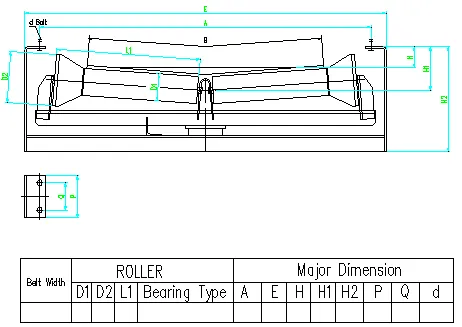 Afrikaans
Afrikaans  Albanian
Albanian  Amharic
Amharic  Arabic
Arabic  Armenian
Armenian  Azerbaijani
Azerbaijani  Basque
Basque  Belarusian
Belarusian  Bengali
Bengali  Bosnian
Bosnian  Bulgarian
Bulgarian  Catalan
Catalan  Cebuano
Cebuano  Corsican
Corsican  Croatian
Croatian  Czech
Czech  Danish
Danish  Dutch
Dutch  English
English  Esperanto
Esperanto  Estonian
Estonian  Finnish
Finnish  French
French  Frisian
Frisian  Galician
Galician  Georgian
Georgian  German
German  Greek
Greek  Gujarati
Gujarati  Haitian Creole
Haitian Creole  hausa
hausa  hawaiian
hawaiian  Hebrew
Hebrew  Hindi
Hindi  Miao
Miao  Hungarian
Hungarian  Icelandic
Icelandic  igbo
igbo  Indonesian
Indonesian  irish
irish  Italian
Italian  Japanese
Japanese  Javanese
Javanese  Kannada
Kannada  kazakh
kazakh  Khmer
Khmer  Rwandese
Rwandese  Korean
Korean  Kurdish
Kurdish  Kyrgyz
Kyrgyz  Lao
Lao  Latin
Latin  Latvian
Latvian  Lithuanian
Lithuanian  Luxembourgish
Luxembourgish  Macedonian
Macedonian  Malgashi
Malgashi  Malay
Malay  Malayalam
Malayalam  Maltese
Maltese  Maori
Maori  Marathi
Marathi  Mongolian
Mongolian  Myanmar
Myanmar  Nepali
Nepali  Norwegian
Norwegian  Norwegian
Norwegian  Occitan
Occitan  Pashto
Pashto  Persian
Persian  Polish
Polish  Portuguese
Portuguese  Punjabi
Punjabi  Romanian
Romanian  Russian
Russian  Samoan
Samoan  Scottish Gaelic
Scottish Gaelic  Serbian
Serbian  Sesotho
Sesotho  Shona
Shona  Sindhi
Sindhi  Sinhala
Sinhala  Slovak
Slovak  Slovenian
Slovenian  Somali
Somali  Spanish
Spanish  Sundanese
Sundanese  Swahili
Swahili  Swedish
Swedish  Tagalog
Tagalog  Tajik
Tajik  Tamil
Tamil  Tatar
Tatar  Telugu
Telugu  Thai
Thai  Turkish
Turkish  Turkmen
Turkmen  Ukrainian
Ukrainian  Urdu
Urdu  Uighur
Uighur  Uzbek
Uzbek  Vietnamese
Vietnamese  Welsh
Welsh  Bantu
Bantu  Yiddish
Yiddish  Yoruba
Yoruba  Zulu
Zulu conveyor belt parts and functions
Conveyor Belt Parts and Functions
Conveyor belts play a critical role in various industries, serving as essential components for material handling and transportation. Understanding the parts of a conveyor belt and their functions can help optimize its performance and improve operational efficiency.
1. Belt Material The conveyor belt itself is typically made from various materials, such as rubber, plastic, metal, or fabric, depending on the specific application. Each material has distinct properties that affect flexibility, durability, and resistance to wear and abrasion.
2. Pulleys Pulleys are cylindrical components located at both ends of the conveyor belt. They serve to drive the belt and help to redirect it. The drive pulley is powered by a motor, creating movement, while the return pulley allows the belt to return to its starting position. Pulleys are essential for maintaining the tension and alignment of the belt.
3. Idlers Idlers are rollers that support the conveyor belt along its path. They are strategically placed to minimize sagging and friction, ensuring smooth movement. There are various types of idlers, including trough, flat, and return idlers, each designed to cater to specific load and operational conditions.
conveyor belt parts and functions

4. Conveyor Frame The conveyor frame provides the structural support needed to hold the entire system together. It is usually made from steel or aluminum, and its design must accommodate the weight of materials being transported while maintaining stability.
5. Drive System The drive system is integral to conveyor belt operations, typically consisting of an electric motor, gearbox, and associated components that deliver power to the drive pulley. This system determines the speed and efficiency of the belt's movement.
6. Belt Fasteners To connect the ends of the conveyor belt, fasteners are used. These can be mechanical, such as clips, or adhesive. Proper fastening is crucial to prevent slippage and ensure the belt operates correctly.
7. Sensors and Controls Modern conveyor systems often incorporate sensors and automated controls to monitor performance and adjust speed or direction as needed. These additions enhance safety and efficiency, allowing for real-time troubleshooting and monitoring.
In conclusion, each part of a conveyor belt system plays a vital role in its overall functionality. Understanding these components and their functions is essential for maintaining and optimizing conveyor systems in various industrial applications, from manufacturing to logistics. By ensuring that all parts are in good working order, businesses can enhance productivity and minimize downtime.
-
Trusted Conveyor Solutions from Leading Conveyor Idler Roller ManufacturersNewsJun.27,2025
-
Reliable Return Idler Solutions for Efficient Belt Conveyor SystemsNewsJun.27,2025
-
Precision Conveyor Accessories for Streamlined Material HandlingNewsJun.27,2025
-
High-Quality Belt Conveyor Idler Solutions for Efficient Material HandlingNewsJun.27,2025
-
High-Performance Belt Conveyor Pulleys for Reliable Material HandlingNewsJun.27,2025
-
Enhancing Material Handling EfficiencyNewsJun.27,2025





























